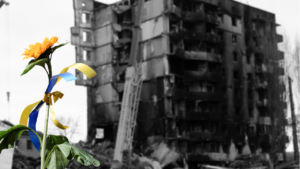Because of my interest in Development-in-a-Box™, I was interested in a Washington Post article on how reconstruction in Iraq is progressing given the violence that continues to plague that war torn country [Griff Witte, “Despite Billions Spent, Rebuilding Incomplete,” 12 November 2006]. The primary source of information for much of the information contained in the article is Clifford G. Mumm, who manages Iraqi projects for Bechtel Corporation. The article indicates that much has been done and much has been spent:
For a little more than $38 billion, the United States and its contractors in Iraq have provided 4.6 million people with access to water. They have distributed seeds to Iraqi farmers, improving wheat harvests. With electricity-generating capacity now above prewar levels, they have given many Iraqis more daily hours of power. They have repaired more than 5,000 schools and vaccinated 4.6 million children against polio. The list goes on. But as the U.S.-led, U.S.-funded portion of Iraq’s reconstruction nears its end, American officials and contractors alike are grappling with a cold reality: Thousands of successes in Iraq may add up to a single failure.
The answer to the question “how could so much effort be assessed so poorly” is simple: violence. Many of the projects were attacked as soon as they were completed, many were never finished, some were never used at all because of violence.
“We accomplished a significant amount of work. But it was just overwhelmed by the overlay of violence,” said Clifford G. Mumm, who has spent much of the past three years in Iraq managing projects for Bechtel Corp. “It’s hard to be very optimistic.” U.S.-funded projects have long been a target for sabotage. Many of those that were spared remain unused by a population paralyzed by violence.
I have written before that development begins with security. Without it you don’t have a chance. Where violence has not been as great a problem, reconstruction projects have done much better. Even there, however, a Development-in-a-Box approach could have improved things. Development-in-a-Box uses best practices, internationally accepted standards, and communities of practice to ensure that projects undertaken have the best chance to succeed. The approach also involves training local populations to manage and maintain infrastructure. Such an approach was sadly lacking in Iraq.
Poor planning and coordination by U.S. officials meant that even successful individual projects failed to do the job; for example, health-care centers were built at great cost but had no water and sewer service. Poor work-site management by contractors meant that some projects went awry. And now that the United States is handing over reconstruction efforts to Iraq, many involved with the process worry that the Iraqis don’t have the training or the money to keep U.S.-built facilities running.
Great beginnings deserve great endings. “Overall, 88 percent of planned projects — about 12,000,” Witte reports, “have been completed, with just 4 percent yet to begin.” Unfortunately, but there doesn’t appear to be a “happy ever after” ending in Iraq. The money committed for construction is nearly gone and many Iraqis see no difference in their circumstances.
In the transportation sector, for example, the numbers look good. The United States has finished repairs on 86 of 98 railway stations. But few trains run because of security concerns. In the oil sector, despite the fact that production capacity has nearly returned to prewar levels, the country had a severe fuel shortage this summer because of high demand and sabotage. Millions of children have received vaccinations and thousands of health-care workers have been trained. But more than 100 health-care facilities that were scheduled to be finished by now instead are empty because the contractors assigned to build them did not get their jobs done.
The U.S., of course, wanted to make the reconstruction of Iraq a showcase of what democracy and capitalism could do for the region. Plans were grand — and that was part of the problem. Process became more important than product, something that could have easily been avoided using the Development-in-a-Box approach.
The problem, [Jon C. Bowersox, who until this summer was the health attache at the U.S. Embassy in Baghdad] said, was that the plan to build new facilities across the country was too ambitious. “We could have gone in and done low-cost rehabs, and not tried to transform their health-care system in two years,” he said.
I guarantee that no non-governmental organization that has been deeply involved in providing healthcare in the developing world would have made that mistake. That is the power of communities of practice. They have not only learned to be practical and pragmatic, they have learned to involve the local community in projects:
CHF International, a Silver Spring nonprofit organization, has operated in Iraq since the U.S. invasion, completing hundreds of projects on slim budgets. The organization’s Middle East director, Bruce Parmelee, said CHF has avoided violence because local communities were always involved in the work. “Before we could do anything, the community would have to agree. I would tell them, ‘It’s for your community. You’re the Iraqis. You can pave the way for this to happen.’ And they did that,” said Parmelee, who spent months at a time living among Iraqis in the areas where CHF worked. “It was never a case of some American saying, ‘This is what you need in your country.’ People won’t attack projects that they feel ownership of.” That community-based approach, he said, wasn’t broadly shared by others involved in the reconstruction. “Large contractors didn’t necessarily have that mandate,” he said. “Security was challenged right from the beginning, so a majority of decisions were made behind a bulletproof shield.”
With violence still the most significant characteristic of the security environment in Iraq, many lucrative contracts sit fallow hoping for stability to come. It’s a good sign that the Democrats are still talking reconstruction continuing even as they push for troop redeployment. Let’s hope they learn lessons that will help them make the projects they undertake have a more lasting impact.




